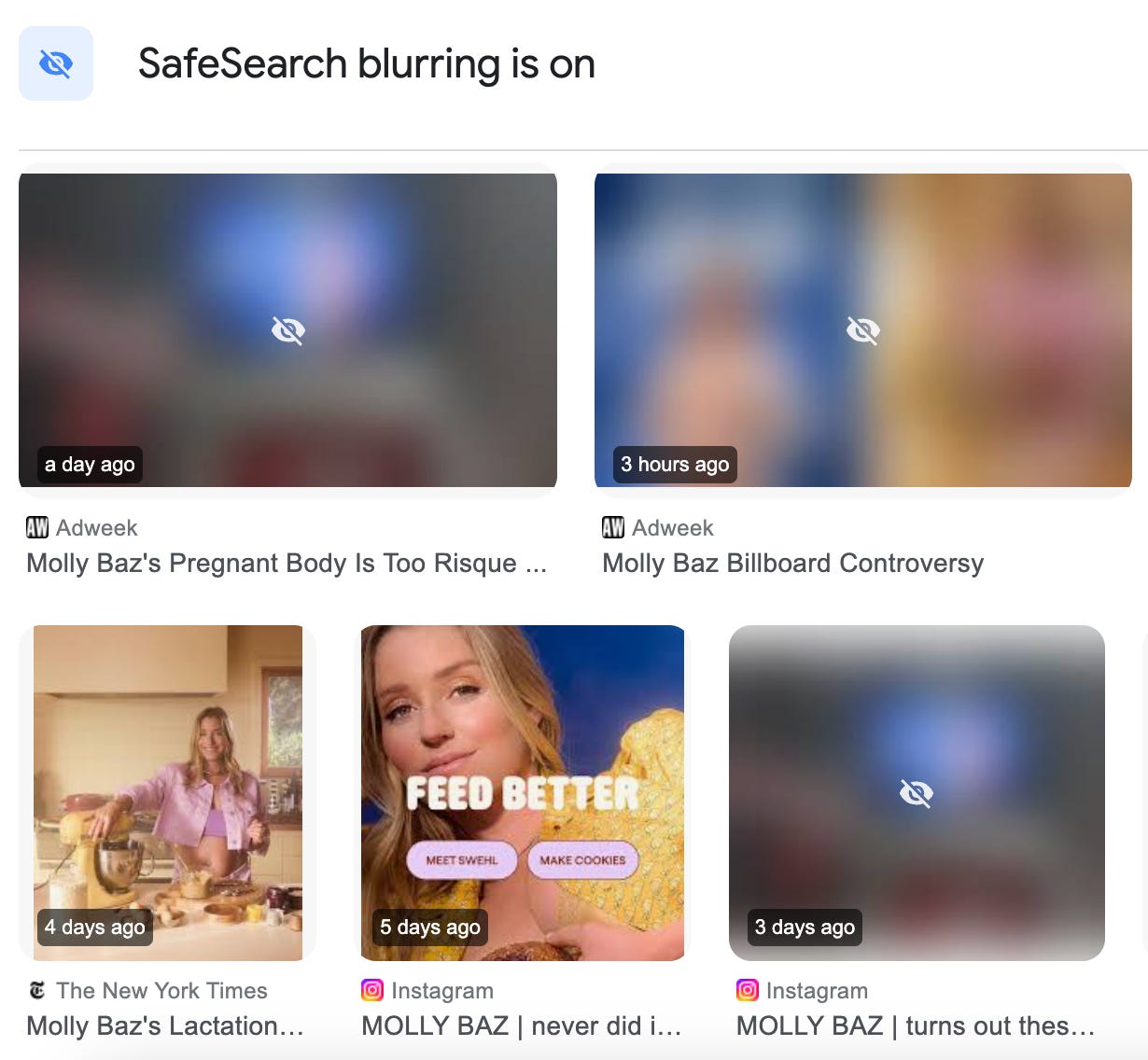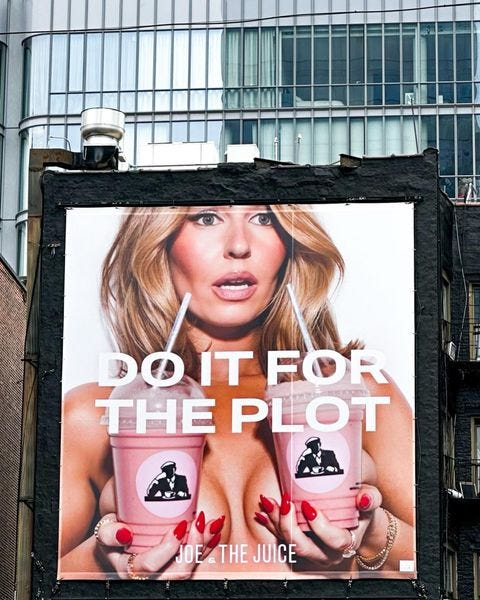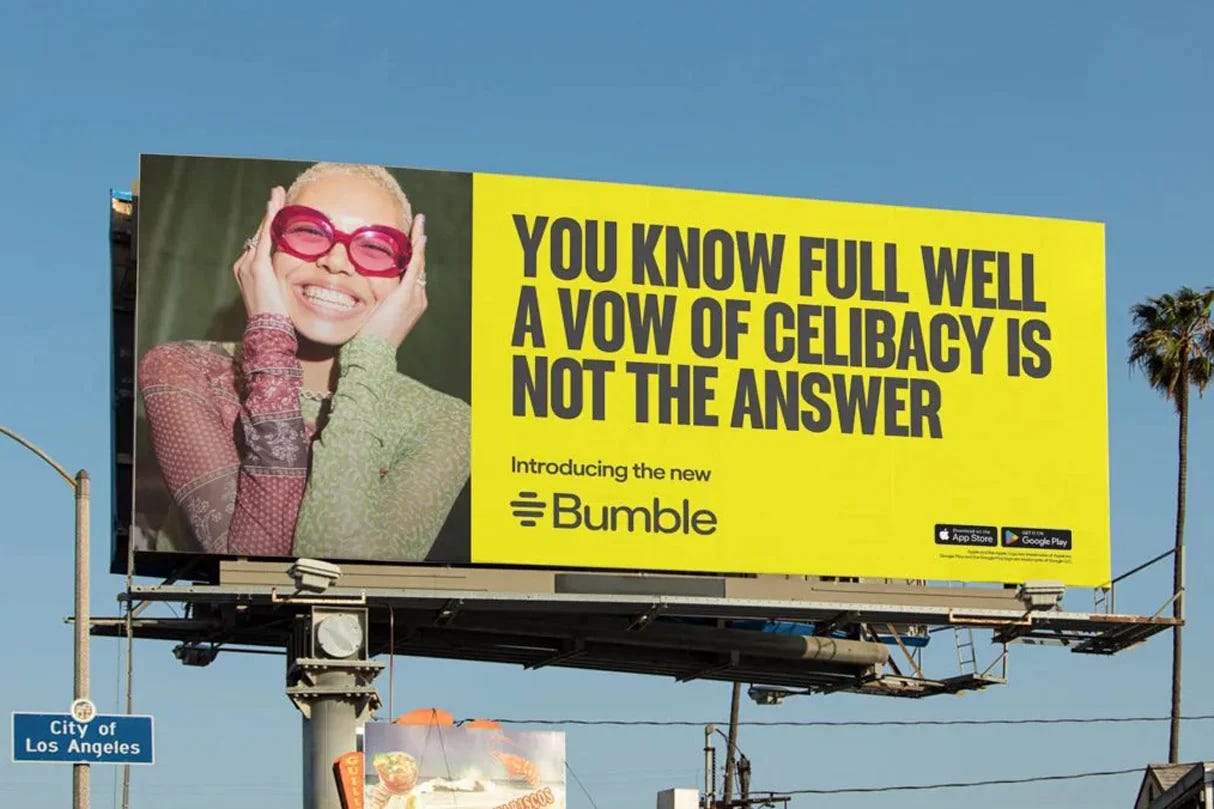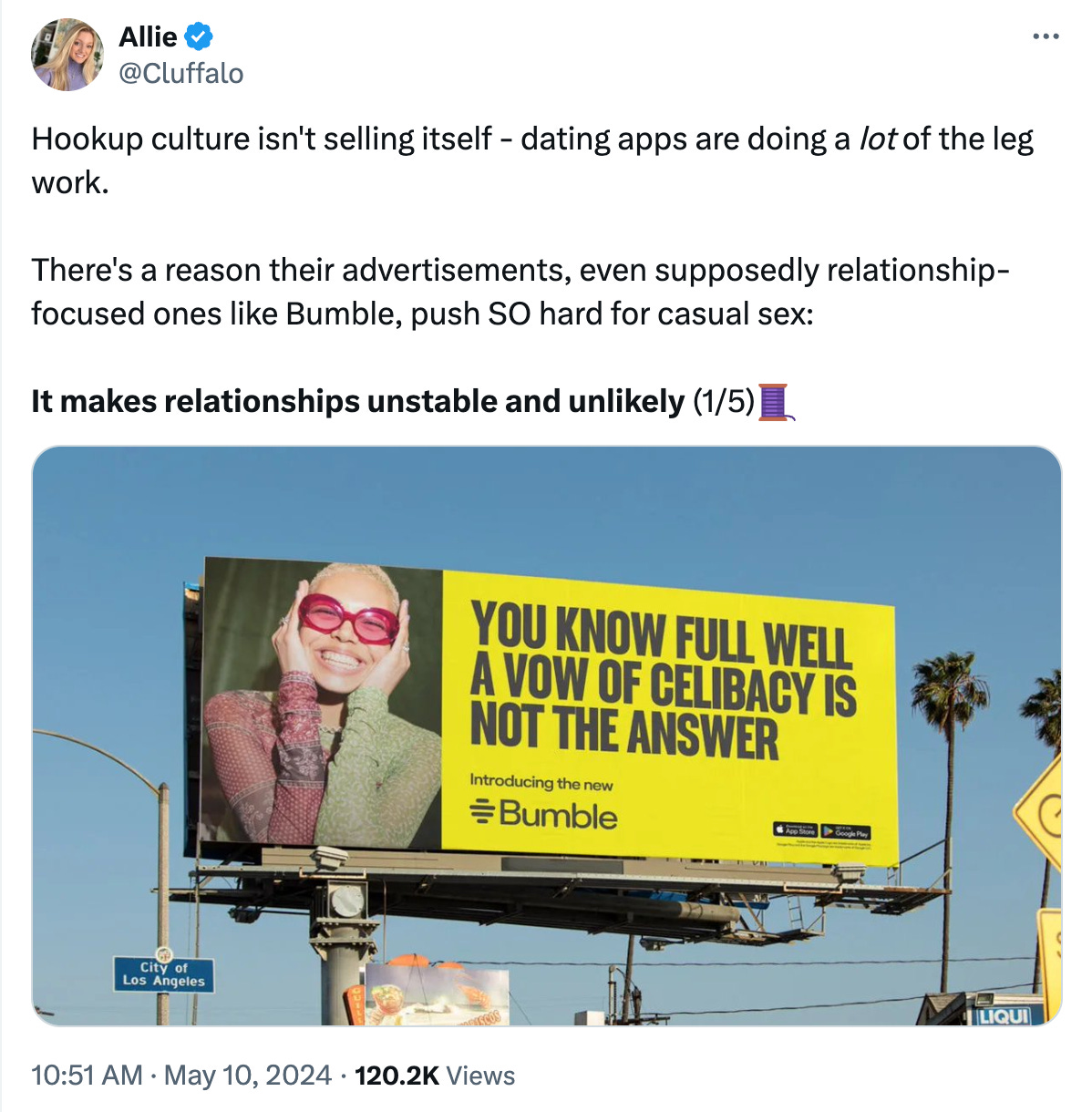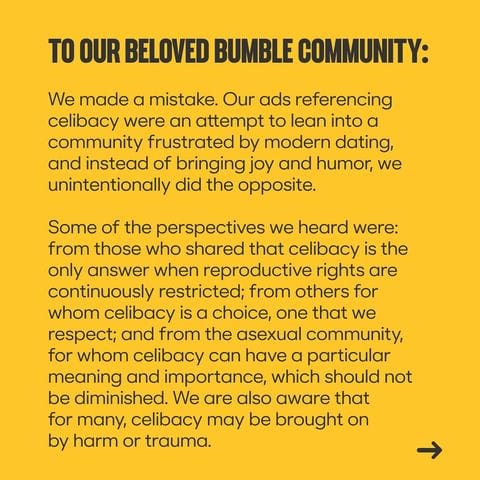Issue #16: A busy week for billboards
How Swehl and Frida face challenges in authentically representing women’s bodies and experiences. Plus, the Bumble 'vow of celibacy' billboard.
Hi everyone! And helloooo to all my new subscribers, thank you for being here :) There’s a lot to discuss this week. You might have to click on ‘View entire message’ at the bottom of the email to read the full thing. We’re talking:
The Molly Baz Swehl billboard
The Joe & The Juice x Serena Kerrigan billboard
Frida’s Uncensored campaign
And finally, Bumble’s celibacy billboard
It was a busy week for billboards, I guess.
The Molly Baz Swehl billboard
Last week, breastfeeding care company Swehl launched a new campaign featuring former Bon Appétit star and chef Molly Baz. A central component of the campaign was an ad in Times Square featuring a pregnant Molly holding lactation cookies in front of her boobs:
But just a few days after the billboard went up, Clear Channel, the owners of the digital billboard, told Swehl’s media agency, Brex, that the image was ‘flagged for review.’ In a miscommunication, Brex then informed Swehl that Clear Channel had described the ad as violating their guidelines for acceptable content and needing to be taken down, so Brex provided an alternative. Even as I pulled the cover image for this issue, the original image was blurred by Google Search’s SafeSearch feature!!
The situation is a clear example of a double standard. As The New York Times aptly points out, there are images of Jeremy Allen White’s nearly nude body all over the city right now for his Calvin Klein campaign. And there are undressed women on billboards too, but they tend not to be pregnant (or successful chefs). They’re often sexualized and aligned with societal beauty ideals such as whiteness and thinness. They also tend to be associated with particular brands and products, like lingerie or perfume, as opposed to a brand like Swehl, which is focused on products that support motherhood and lactation.
I think that there should be space for and acceptance of representations of all types of bodies – pregnant or not pregnant, breastfeeding or no breasts, selling lactation cookies or selling lipstick. When my coworkers and I were talking about the Swehl controversy earlier this week, it reminded me of this ad for Joe & The Juice featuring actress Serena Kerrigan from last summer:
The Joe & The Juice x Serena Kerrigan billboard
The similarities between Molly Baz’s image and Serena Kerrigan’s image are striking. The main difference is that Molly Baz is pregnant. And because our society doesn’t view pregnant women’s bodies as attractive or sexual, Molly’s ad, intended to represent strength and power in motherhood, was revoked.
Then there’s that adage, any PR is good PR. Whether or not that’s entirely true, there’s no denying that the controversy resulted in an uptick of brand awareness for Swehl. They saw a 500% increase in traffic to their website with 40,000 new users following their announcement of the billboard backlash on social media. I’m glad that we’re having this conversation, AND I hope that the ad gets its deserved airtime back (plus an apology to Molly & the Swehl team).
Frida’s Uncensored campaign
All of this also reminded me of fertility brand Frida’s recent launch of the ‘Frida Uncensored’ platform, which publishes uncensored educational content about reproductive health, pregnancy, childbirth, and women’s bodies. The platform features real women in its content, rather than vague drawings or difficult-to-read descriptions. Frida worked with adult entertainment actress and mom Asa Akira to demonstrate some of the taboo or scary elements of pregnancy and childbirth, helping audiences avoid the fear or uncertainty that can come with pregnancy.
Frida CEO Chelsea Hirschhorn calls out the challenges around social media censorship with her brand, as social media algorithms will flag words like sex, vagina, vulva, and period as explicit content.
With out-of-home advertising and social media platforms both creating barriers to authentic representations of women’s bodies and their experiences, brands focused on women’s health and motherhood like Swehl and Frida are often limited in their ability to drive brand awareness through such outlets.
Bumble’s celibacy billboard
While we’re on the topics of women’s bodies and billboards, let’s discuss Bumble’s recent ad controversy, shall we? Bumble recently unveiled a brand refresh and product updates, including no longer requiring women to message first. I love some of their new creative, featuring Renaissance art overlaid with relatable sentiments capturing our collective exhaustion with the dating scene. They even launched a full video ad about a woman who ditches dating to join a convent but doesn’t make it very long after staring at the shirtless gardener. Note: I can no longer find this video at the time of writing… It may have been taken down in response to the backlash described below??)
But after that, Bumble started rolling out new billboards in LA with the following copy: “You know full well a vow of celibacy is not the answer.”
wrote about this in his Substack, Who Do You Know, earlier this week, and I reshared his post, highlighting that dating apps actively promote the culture that has led to these swears of celibacy. Dating app product features, such as the gamification of swiping and the seemingly endless number of options to choose from, create dangerous and negative experiences for people that lead women to opt out of dating and sex in the first place.There are so many good, nuanced TikToks out there about this if you want to learn more!
When Bumble told women that celibacy isn’t the answer in this ad, they attempted to take power and agency away from a woman’s choice not to have sex. Celibacy can be a really empowering decision for a lot of women with histories of sexual assault, risk of STI or pregnancy, and more. Bumble really missed the mark on this one. They apologized on Monday, writing this social media post:
Ok, last thing for this week (I just really love it when marketing and sociology intersect!). One noteworthy mention goes out to e.l.f, who launched their ‘So Many Dicks’ campaign to highlight inequality on publicly-traded company boards. The creative points out that there are more men named Dick on corporate boards than there are entire groups of underrepresented people, including Hispanic women and Native American women. I also love the campaign website, which clearly showcases that e.l.f.’s own board of directors is a diverse group.
Finally, an out-of-home win this week!
Thanks for reading, and have a great weekend (it’s my 25th birthday one!).






